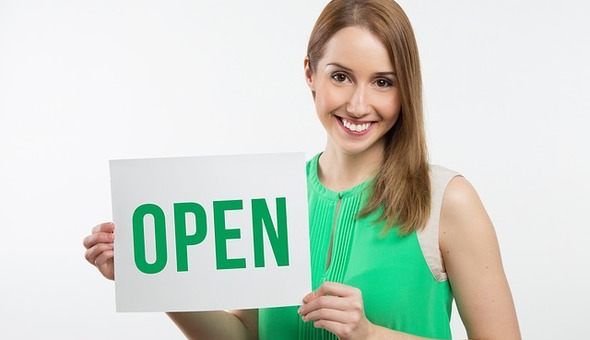A wary commercial lending climate and a history of gender bias in the banking industry have made it more challenging for women entrepreneurs seeking start-up funding for small businesses.
Fortunately, however, there are several government-backed loan programs and innovative funding strategies that can help women to secure the necessary monies to pursue their entrepreneurial dreams.
Below you will find the essential checklist of business lending options for women.
Data on Women-Owned Businesses
According to the 2016 State of Women-Owned Business Report commissioned by American Express, there are an estimated 11.3 million women-owned businesses in the United States. These businesses employ 8.98 million people and generate more than $1.6 trillion in annual revenue.
Here are some other interesting insights from the report:
- From 2007-2016, the number of women-owned businesses has grown by 45 percent, nearly five times faster than the national average.
- Women are majority owners in 38 percent of the country’s businesses, up from 29 percent in 2007.
- Women-owned businesses employ 8 percent of private-sector employees, up from 6 percent in 2007.
- The number of companies owned by women of color has increased by 126 percent since 2007, representing 2.8 million of the 3.5 million new women-owned businesses in that time.
Resources for Women Seeking to Start a Business
There are many resources provided by the U.S. Small Business Administration for women interested in starting their own business.
- The Office of Women’s Business Ownership provides advocacy, education, outreach, and support. Programs are designed to offer special assistance to women who are socially or economically disadvantaged. Training and counseling are offered on a range of topics and in multiple languages.
- Women’s Business Centers located around the country are educational locations designed to help women start and expand small businesses.
- The InnovateHER Challenge, started in 2015, offers prizes for entrepreneurs whose products or services make an impact on the lives of women and families.
Another opportunity is to register with the federal government and your state as a women-owned business. There are many programs that provide preferential opportunities to minority and women-owned businesses in applying for federal or state work.
The federal Women-Owned Small Business Federal Contracting Program began in 2011. Through the program, various federal agencies set aside a portion of purchasing for qualified women-owned businesses. It includes set-asides in industries where women-owned businesses are underrepresented.
Federal Funding Options for Women-Owned Businesses
For women who need start-up funding, there are many options, although loans are generally the first consideration.
The SBA offers several programs that are designed to provide opportunities for small business loans for women.
7(a) Loan Program
This program is for small, for-profit businesses, including franchises, and most other types of businesses. It cannot be used for passive investments, such as rental properties.
The SBA does not lend money, but the agency offers guarantees that allow for bank and non-bank lenders to provide funds more easily for women-owned businesses.
Proceeds from these loans can be used for several general business purposes, including long-term working capital; short-term working capital; construction financing; and revolving funds based on existing inventory and receivables. Funds can be used to purchase:
- Equipment, furniture, fixtures, machinery, materials, and supplies
- Real estate, including buildings and land
- A new building or renovations to an existing structure
- The business itself, creation of a new business, or to acquire, operate, or expand an existing business
Money from these loans can be used to refinance business debts under certain conditions.
The loans cannot be used to reimburse funds owed to a business owner or repay delinquent federal withholding or state taxes. Other restrictions apply.
Loan amounts are maxed at $5 million; there is no minimum. In fiscal 2015, the average loan amount was $371,000. Loan guarantee fees vary based on the loan amount and the time to maturity.
Interest rates are negotiable between the applicant and lender, though there are SBA-mandated maximum rates, currently set at 2.75% above prime. Fixed and variable rate loans are available.
The advantages for lenders are considerable. The SBA will guarantee up to 85 percent of loans up to $150,000 and 75 percent on larger loans, up to a maximum exposure of $3.75 million.
The SBA requires applicants to submit several documents to qualify for the 7(a)-loan program:
- A formal SBA loan application
- Personal background and financial statement
- Business financial statements, including a profit and loss (P&L) statement for up to three years prior to the loan application and projected financial statements, including a detailed one-year projection of finances and income along with a written explanation as to how the projections will be met
- Ownership and affiliation documentation, including subsidiaries and affiliates, including those with stock ownership, franchise, or merger relationships
- Original business license or certificate
- Loan application history
- Signed tax returns, including personal and business federal income taxes for the past three years
- Resumes for each principal
- A business overview and history, including challenges, an explanation of why the loan is needed and how the loan will help the business
- Copy of your business lease or note from landlord detailing lease terms
If purchasing an existing business, documentation on the to-be-purchased business must be provided, including:
- Balance sheet
- P&L statement
- Two years of federal income tax returns
- Proposed bill of sale with terms
- Asking price
- Inventory schedule, including machinery, equipment, furniture, and furnishings
While loan processing times vary, the SBA Express program allows for expedited processing for loans, given certain conditions.
CDC/504 Loan Program
This program is similar to the 7(a) loan, but is designed for real estate and equipment purchases. The 504 loan, as it is commonly known, can be used for:
- Buying land and existing buildings
- Making improvements to property, such as street improvements, grading, parking lots, landscaping, and utilities
- Building new facilities
- Renovating, modernizing, or converting facilities
- Buying long-term equipment or machinery
The loan cannot be used for working capital and inventory; refinancing, consolidating, or repaying debt; or investing or speculating in rental real estate. Documentation required for the 504 loans is similar to that needed for the 7(a)-loan program.
Microloans
The SBA administers microloans and provide up to $50,000 for small businesses and not-for-profit childcare centers. The average loan amount is about $13,000.
Loans can be used for inventory, supplies, working capital, machinery, equipment, furniture, or fixtures. Interest rates vary and the loans are administered through nonprofit, community-based organizations. The maximum repayment term is six years.
Seeking Grant Support
Grants are another option for women entrepreneurs. The attraction of grants is that they do not need to be repaid. However, many grants come with requirements or stipulations that need to be clearly understood before applying.
Many government grants come with specific application instructions and guidelines. In addition, there are usually reporting requirements that detail how the money is being spent.
While there are no federal grant programs specific for women-owned businesses, they can be found at the state level. Be sure to check out your state’s business development or commerce departments for specifics.
Private opportunities abound, with various businesses offering programs to support women-owned businesses. In 2016, for example, Walmart completed its five-year Global Women’s Economic Empowerment Initiative, which aimed to source $20 billion from women-owned businesses.
Here are a couple others:
- The Amber Grant, which provides grants starting at $500 to entrepreneurial women to help them get a toehold and be better positioned to secure financing.
- The Eileen Fisher Foundation provides grants for women-owned businesses focused on social and environmental change.
Leveraging Retirement Plans for Small Business Financing
At Benetrends, we have pioneered an option for women who prefer not to pursue loans or other financing options. Benetrends helps small business owners to use their existing 401(k) or IRA accounts to provide the funding needed to open their new business without incurring tax penalties.
Under the ROBS (Rollover as Business Startups) business funding model, a business is structured as a C corporation. The business owner can convert an existing 401(k) into funds that, in a matter of weeks, allow a business owner to purchase a business or franchise and open the doors.
Benetrends has worked with thousands of business owners to help them make the most of existing retirement funds and accelerate their business opportunities. To learn more about how Benetrends can help you with your entrepreneurial dreams, download Innovative Funding Strategies For Entrepreneurs.

